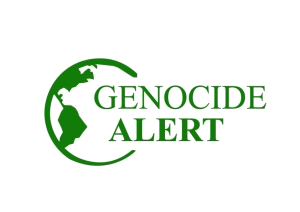Debatte zur Schutzverantwortung in der Generalversammlung der Vereinten Nationen am 5. September 2012: Der deutsche Beitrag
Während des vierten Dialog der UN-Generalversammlung zur Schutzverantwortung am 5. September 2012 verdeutlichte der Stellvertreter des Ständigen Vertreters Deutschlands Botschafter Miguel Berger, dass die Einzelstaaten im Bezug auf die Schutzverantwortung vor drei wesentlichen Herausforderungen stünden. Hierzu zählten die weitere Ausgestaltung des Konzept, die Operationalisierung der ersten und zweiten Säule auf nationaler Ebene, sowie die Bewältigung der öffentlichen Erwartungen gegenüber der Schutzverantwortung. Bezüglich der Ausgestaltung des Konzept erinnerte Berger daran, dass es keine Musterlösung für die Prävention von und Reaktion auf Massenverbrechen gäbe, sondern jeweils situationsbezogene Lösungen angestrebt werden müssten. Zur Operationalisierung der Schutzverantwortung auf nationaler Ebene kündigte Berger an, dass Deutschland kurz vor der Ernennung eines nationalen Focalpoints für die Schutzverantwortung stehe. Zur öffentlichen Wahrnehmung der Schutzverantwortung äußerte Berger die Sorge der Bundesrepublik, dass die dritte Säule der Schutzverantwortung, zum Nachteil der ersten beiden, zu viel Aufmerksamkeit erhalte. Deutschland betrachte die Schutzverantwortung als ein ganzheitliches Konzept, welches Prävention und Reaktion verbinde. Unten die Rede in voller Länge auf Englisch.
General Assembly: Statement by Ambassador Berger at the 4th Informal Interactive Dialogue on the Responsibility to Protect
Sep 5, 2012
(General Assembly: Statement by Ambassador Berger at the 4th Informal Interactive Dialogue on the Responsibility to Protect)
Mr. President,
I would like to thank you for convening this important and timely debate, and to express thanks to the Secretary-General for his intervention and his recent report. We also express our gratitude and appreciation for the work undertaken by Prof. Ed Luck in his former capacity as the SG’s Special Adviser on Responsiblity to Protect (R2P).
Germany aligns itself with the EU intervention and would like to underline the following additional points:
Since 2005, the international community has explicitly embraced the principle that the commission of mass atrocities is not an internal matter enjoying protection from outside interference. Both the General Assembly and the Security Council have repeatedly invoked the Responsibility to Protect which obliges us collectively to act in a timely and decisive manner, through diplomatic and other peaceful means, to prevent the emergence of situations conducive to the commission of such atrocities, and, where necessary to step in and end such acts. Rwanda and Srebenica continue to remind us of this joint responsibility and the ongoing events in Syria certainly fall within the scope of all its three pillars.
Mr. President,
As states, we are all basically facing three challenges: to further shape the concept, to operationalize pillars one and two at the national level, and to manage public expectations vis-à-vis R2P.
Regarding the concept, I would like to stress the preventive aspects of R2P as well as the responsibility of states and regional organisations for the implementation of R2P. As the report of the SG illustrates, a multitude of options and instruments are available to allow for tailor-made approaches to preventing or stopping the occurrence of mass atrocities. Thus, there can be no “one size fits all” approach.
Also, the full equality of all three pillars precludes an “either/or approach” with regard to prevention and more coercive action, as well as a strict sequencing of actions under each pillar. Rather, we need to ask ourselves in each case how best to achieve the objective of protecting those who are or may be the target of atrocities. Within this approach, measures under chapter vii, while being a last resort, do not require a prior futile use of other means – as long as the Security Council sees chapter VII measures as the only viable option.
At the same time, we recognise the need to further develop the concept while building on past experiences and we are aware of calls for possible criteria or guidelines for the use of force under the 3rd pillar, as well as for possible procedures to monitor and evaluate such measures in order to satisfy existing information requirements. We welcome that efforts have been made to advance this discussion, and Germany has already engaged in political dialogue with third countries on R2P in order to advance a common understanding of the concept and its 3rd pillar in particular.
Regarding the operationalization of R2P at the national level, Germany has set up the structures useful for effective implementation of the second pillar. Our action in this area is guided by the understanding of R2P as a cross-cutting principle. The German Government has established an inter-ministerial working group for civil crisis prevention and early warning and an adjunct advisory council. These bodies have been meeting on country-specific as well as thematic issues related to R2P and will continue to tackle these issues, including those relating to the four crime areas that trigger R2P.
Germany is in the process of appointing a national focal point for R2P. The recommendations that have been formulated by the Global Center for R2P in this regard have been very helpful in this process.
As to the public perception of R2P, Germany remains concerned about the prevailing narrow focus on the third pillar. The discussion of NATO’s military action in implementation of Security Council resolution 1973 has unnecessarily further contributed to a reduced awareness of pillars one and two. Let me therefore again stress that we remain committed to the application of R2P as a holistic concept that merges prevention and response.
I thank you.
